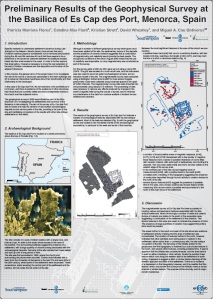Hey guys, I thought this could be of great interest 🙂
DEBATING SPATIAL ARCHAEOLOGY.
Internationl Workshop on Landscape and Spatial Analysis in Archaeology
Santander, June 2012
Debating Spatial Archaeology
The study of spatiality is one of the most important issues in Archaeology. Since the very first moments of the discipline, the understanding of spatial relations has been a key factor for interpreting past social dynamics. The importance of spatial analyses has led to the appearance of specific issues within Archaeology, such as Landscape Archaeology, Spatial Statistics, Cognitive Archaeology, etc., all of which can broadly be included within the Spatial Archaeology issue. On the other hand, in recent years there has been great improvement in recording methods and analysis tools, mainly thanks to the generalization of GIS, which has contributed to the development of spatial analyses.
However, these methodological improvements and conceptual developments have not always had an accompanying parallel theoretical dissertation about the real application of spatial analyses to archaeological interpretations; spatial analyses usually focus on geographic data and cartographic outcomes which have to be inserted into a previously defined, fixed framework valid in its own right, instead of really trying to link those results with the proposed interpretations. In these cases, space is automatically assumed to be a fully significant concept, either from an economic or relational perspective, but without a serious discussion of what it really means with relation to each particular case.
The main aim of the Debating Spatial Archaeology International Workshop is to provide a debate forum where archaeologists can discuss what space means in Archaeology, how it is perceived and interpreted by archaeologists, and why. Keeping in mind the need for a connection between methodology issues, analysis results and interpretations, participants are encouraged not only to analyse spatial variability, but to point out the probable reasons for such variability from in terms of social space, as well as to discuss how their spatial analyses can improve the understanding of social and historical dynamics within their case studies.
http://www.spatialarchaeology.unican.es/Default.aspx
Tags: Conferences, GIS

